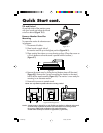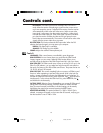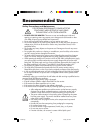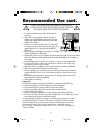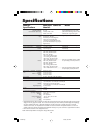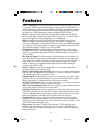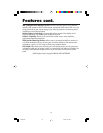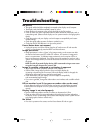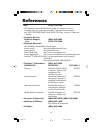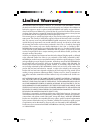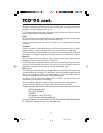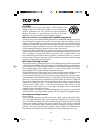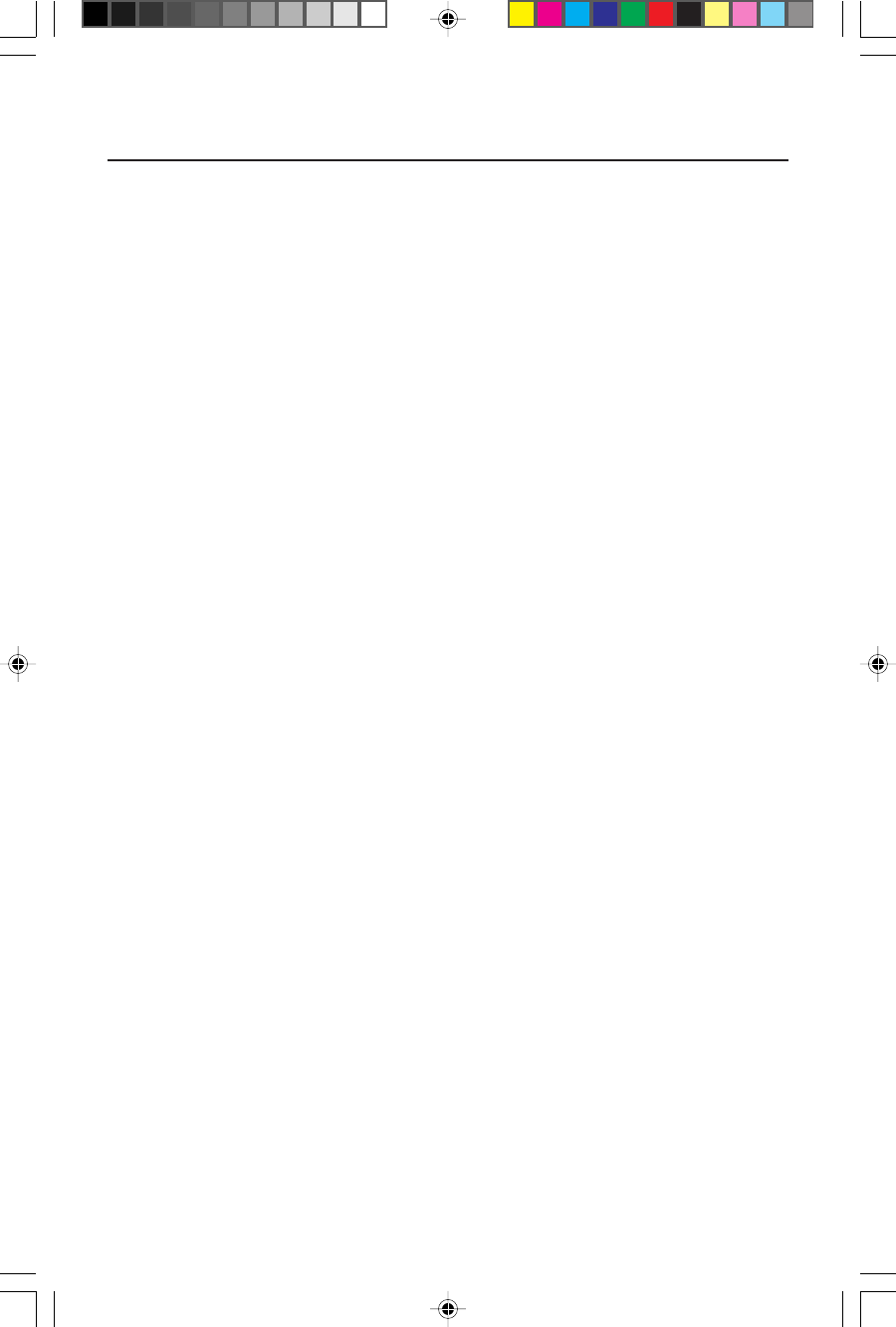
15
Features
ambix™ Technology: Dual input technology allowing both analog and digital inputs off of
one connector (DVI-I) as well as additional legacy analog support off of a traditional 15-
pin VGA connector. Provides traditional MultiSync
®
technology compatibility for analog as
well as TMDS™-based (Transition Minimized Differential Signaling) digital compatibility
for digital inputs. TMDS-based digital interfaces include DVI-D,DFP and P&D.
DVI-I: The integrated interface ratified by the Digital Display Working Group (DDWG)
that allows both digital and analog connectors off of one port. The “I” stands for integra-
tion for both digital and analog, The digital portion is TMDS-based.
DVI-D: The digital-only subset of DVI ratified by the Digital Display Working Group
(DDWG) for digital connections between computers and displays. As a digital-only
connector, analog support is not provided off a DVI-D connector. As a TMDS-based digital
only connection, only a simple adapter is necessary for compatibility between DVI-D and
other TMDS-based digital connectors such as DFP and P&D.
DFP (Digital Flat Panel): An all-digital interface for flat panel monitors which is signal
compatible with DVI. As a TMDS-based digital only connection, only a simple adapter is
necessary for compatibility between DFP and other TMDS-based digital connectors such
as DVI and P&D.
P&D (Plug and Display): The VESA standard for digital flat panel monitor interfaces. It is
more robust than DFP since it allows for other options off a signal connector (options like
USB, analog video and IEEE-1394-995). The VESA committe has recognized that DFP is a
subset of P&D. As a TMDS-based connector (for the digital input pins), only a simple
adapter is necessary for compatibility between P&D and other TMDS-based digital
connector such as DVI and DFP.
NuCycle™ Plastic: A special silicone compound for PC resin, being extremely flame-
retardant, safe and environmentally friendly.
XtraView
®
Wide Viewing Angle Technology: Allows the user to be able to see the monitor
from any angle (160 degrees) from any orientation — Portrait or Landscape. Provides full
160° viewing angles either up, down,left or right.
Reduced Footprint: Provides the ideal solution for environments requiring superior image
quality but with size and weight limitations. The monitor’s small footprint and low weight
allow it to be moved or transported easily from one location to another.
AccuColor
®
Control System: Allows you to adjust the colors on your screen and customize
the color accuracy of your monitor to a variety of standards.
OSM
™
(On-Screen Manager) Controls: Allow you to quickly and easily adjust all elements
of your screen image via simple to use on-screen menus.
ErgoDesign
®
Features: Enhance human ergonomics to improve the working environment,
protect the health of the user and save money. Examples include OSM controls for quick
and easy image adjustments, tilt/swivel pivot stand for preferred angle of viewing, small
footprint and compliance with MPRII and TCO guidelines for lower emissions.
Pivoting Stand: Allows users to adjust the monitor to the orientation that best fits their
application, either Landscape orientation for wide documents, or portrait orientation for
the ability to preview a full page on one screen at one time. The Portrait orientation is also
perfect for full screen video conferencing.
Plug and Play: The Microsoft
®
solution with the Windows
®
95/98 operating system
facilitates setup and installation by allowing
the monitor to send its capabilities (such as
screen size and resolutions supported)
directly to your computer, automatically optimizing
display performance.
2010X.wpc 7/13/00, 5:01 PM17



